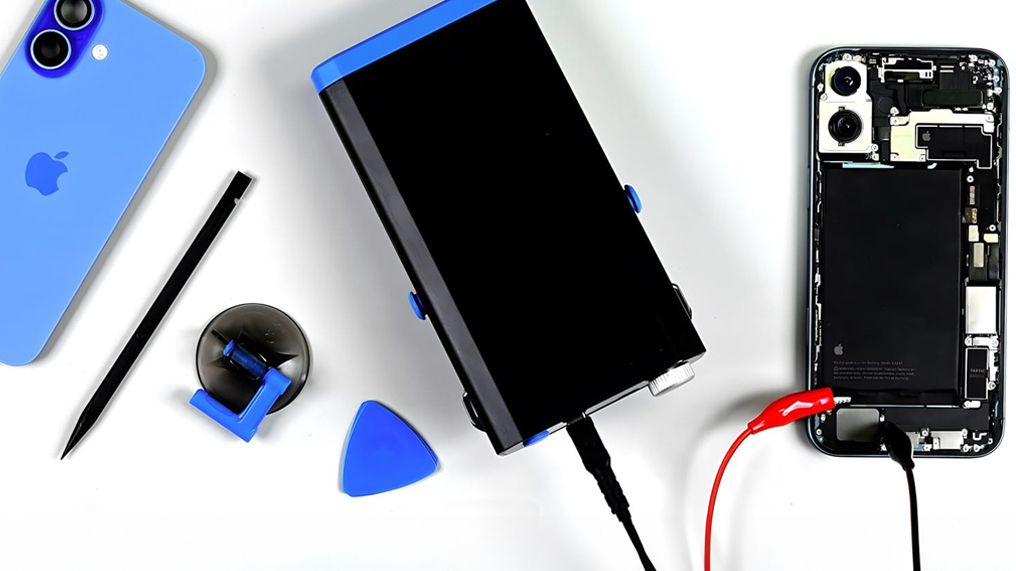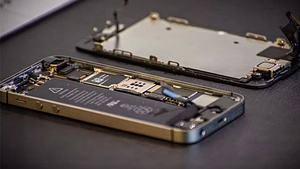The world of iPhone repair is rapidly evolving, thanks to technological advancements and the ever-changing designs of Apple’s flagship device. With each new release, such as the highly anticipated iPhone 16, repair techniques and tools must adapt to meet the growing complexity of these devices.
Whether you’ve cracked your screen, encountered battery issues, or need help with software malfunctions, the latest trends in iPhone repair technology are designed to ensure faster, more efficient, and more reliable service.
Let’s know more about the topic.
1. Advanced Diagnostics with AI Technology
One of the most significant trends in iPhone repair is the integration of AI-powered diagnostic tools. These tools can quickly identify hardware and software issues with greater precision. For example:
- AI systems can detect battery, screen, or internal components problems by analysing usage patterns.
- Machine learning algorithms can predict potential failures, allowing technicians to address them proactively.
This means quicker turnaround times and more accurate repairs for customers, especially for newer models like the iPhone 16.
2. Micro-Soldering for Component-Level Repairs
With iPhones becoming sleeker and more compact, traditional repair methods often need to be revised. Micro-soldering has emerged as a game-changer, allowing technicians to fix problems at the component level rather than replacing entire parts.
This technique is particularly useful for:
- Repairing damaged circuits on the logic board.
- Addressing charging port or power issues.
- Reviving water-damaged devices.
For devices like the iPhone 16, micro-soldering ensures precise repairs, maintaining the integrity of the phone’s advanced components.
3. Laser Machines for Back Glass Repairs
Apple’s recent iPhones, including the iPhone 16, feature stunning back glass designs. However, replacing a cracked back panel has traditionally been costly and time-consuming. Enter laser machines—a breakthrough in repair technology.
- These machines precisely cut and remove damaged glass without harming the surrounding components.
- The process is faster and more affordable than traditional methods, benefiting repair shops and customers.
- This innovation is particularly appealing to customers looking to preserve the aesthetics of their devices without spending a fortune.
4. OEM and Aftermarket Replacement Parts
As Apple releases more sophisticated models like the iPhone 16, the demand for high-quality replacement parts continues to grow. The market now offers a wide range of options, including:
OEM (Original Equipment Manufacturer) Parts: Designed to match Apple’s original components for quality and performance.
Aftermarket Parts: Affordable alternatives that offer comparable functionality, ideal for budget-conscious customers.
Repair shops are also improving transparency by educating customers on the pros and cons of these options, ensuring informed decision-making.
5. Focus on Sustainability
Sustainability has become a critical focus in the iPhone repair industry. As e-waste continues to be a global concern, repair technology is shifting toward environmentally friendly practices.
- Repair shops increasingly offer refurbishing services, extending the life span of devices like the iPhone 16.
- Recycled parts and eco-friendly repair methods are gaining traction, reducing waste and promoting a circular economy.
- For customers, this means access to cost-effective, sustainable repair options that align with environmental values.
6. Enhanced Training and Certification for Technicians
With the complexity of iPhones increasing, technician training has become more specialised. Programs now emphasise skills such as:
- Handling advanced tools like micro-soldering equipment and laser machines.
- Understanding the unique architecture of newer models like the iPhone 16.
- Staying updated on Apple’s repair policies and software updates.
This trend ensures that technicians are well-equipped to deliver high-quality service, instilling confidence in customers seeking reliable iPhone repair solutions.
7. On-Site and Remote Repair Services
Convenience is key in today’s fast-paced world, and the repair industry is responding with on-site and remote repair options.
On-Site Repairs: Technicians can fix common issues at the customer’s location, such as screen or battery replacements.
Remote Repairs: Technicians can access devices remotely to diagnose and resolve software-related problems.
These services are particularly beneficial for busy customers or those using the latest devices, like the iPhone 16, as they ensure minimal disruption to their schedules.
8. Specialised Repairs for the iPhone 16
The iPhone 16 has introduced cutting-edge features, including advanced camera systems, durable materials, and improved battery technology. Repair trends are adapting to address these innovations:
Camera Module Repairs: As multi-lens camera systems become more sophisticated, technicians use advanced tools to repair or replace individual modules.
Durable Screen Technology: While newer screens are more resilient, repairs still require specialised techniques and tools.
Battery Optimization: The latest diagnostic tools ensure that batteries are repaired or replaced without compromising the phone’s performance.
9. Integration of Smart Tools and Apps
Repair shops are leveraging smart tools and apps to streamline the repair process. For example:
- Apps can provide technicians with step-by-step repair guides.
- Intelligent tools can calibrate and test devices post-repair to ensure optimal functionality.
These advancements enhance the repair experience for technicians and customers, particularly for intricate devices like the iPhone 16.
10. Customer-Centric Services
Finally, the focus on customer satisfaction is driving innovation in iPhone repair services. This includes:
Comprehensive Warranties: Shops now offer extended repair warranties, ensuring customers’ peace of mind.
Affordable Pricing Plans: Flexible payment options make repairs accessible to a broader audience.
Real-Time Updates: Customers can track the progress of their repairs through apps or online platforms.
Wrap Up
The iPhone repair industry is evolving rapidly, driven by technological advancements, customer demands, and sustainability goals.
From micro-soldering and laser back glass repairs to on-site services and eco-friendly practices. these trends ensure that customers receive efficient, high-quality service for their devices.
Staying updated on these trends is crucial for iPhone 16 repair and other models.
At Mobile Experts, we pride ourselves on offering cutting-edge repair solutions tailored to the needs of modern iPhone users.







